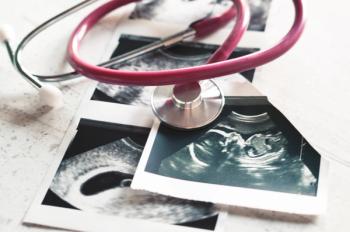
Exploring the CARMEN-LCO3 Trial: Tusamitamab Ravtansine vs Docetaxel in Advanced Non-Squamous NSCLC
At the 2024 World Conference on Lung Cancer, Benjamin Besse, MD, PhD, discussed the findings of the phase 3 CARMEN-LCO3 trial, which led to the discontinuation of the study drug by the manufacturer.
Pharmacy Times interviewed Benjamin Besse, MD, PhD, director of clinical research, Institut Gustave Roussy and professor of medical oncology, Université Paris-Saclay, on the results of the phase CARMEN-LCO3 trial (NCT04154956), which Besse presented at the 2024 World Conference on Lung Cancer (WCLC) in San Diego, California. The focus of his presentation at WCLC was tusamitamab ravtansine (SAR408701; Sanofi) vs docetaxel in patients with previously treated advanced non-squamous non–small cell lung cancer (NSCLC).
Pharmacy Times: What was the focus of the phase 3 CARMEN-LCO3 trial presented at the 2024 World Conference on Lung Cancer?
Benjamin Besse, MD, PhD: Tusamitamab ravtansine that I will call tusa-rav, is an [antibody drug conjugate (ADC)] against [carcinoembryonic antigen-related cell adhesion molecule 5 (CEACAM5)]. CEACAM5 is a transmembrane protein that is overexpressed in roughly 25% of non-squamous NSCLC, so it's a logical target for an ADC. CARMEN-LCO3 is a study in which we have enriched the population, selecting only the patients with another expression of CEACAM5. The payload of tusa-rav is DM4, its microtubule inhibitor.
Pharmacy Times: What were the key efficacy findings from the phase 3 CARMEN-LCO3 trial?
Besse: The study has randomized tusa-rav vs docetaxel in 389 patients; 450 were planned, but the study was discontinued early because of the negative results on the dual primary end point of [progression-free survival (PFS)] by independent review committee and [overall survival (OS)]. So the population is, as I said, patients with positive tumors for CEACAM5. It was defined by a 2+ or 3+ staining in at least 50% of the cancer cells. Patients with oncogene addicted tumor could be enrolled if previously treated by a [tyrosine kinase inhibitor].
All the patients should have received chemotherapy and immunotherapy, either combined or sequential, [since] it's a second-line study. The median PFS is 5.4 months for the tusa-rav arm vs 5.9 months for the docetaxel arm, leading to another ratio of 1.14, so on this primary end point, the study is negative. In the OS, there is a trend of benefit for the tusa-rav arm. The median OS on docetaxel arm is 11.5 months vs 12.9 months for the tusa-rav arm. The surprise of the study is the very good, and I would say too good, performance of the docetaxel arm. The response rate in the docetaxel arm is 24.7%, which is higher than tusa-rav at 21.7% for tusa-rav. We explored why there is such good results in the docetexal arm and the poster showed at this conference that there is a prognostic value of CEACAM5 expression, and the more CEACAM5 is expressed, the better the prognosis of the patient.
Pharmacy Times: What were the safety findings of the phase 3 CARMEN-LCO3 trial?
Besse: So overall, the safety profile favored tusa-rav over docetaxel. In terms of a grade 3 plus adverse event related to the study drug, it was 14.9% for tusa-rav, and 33% for docetaxel, so there were twice less treatment discontinuation in the tusa-rav [arm] related to the adverse events, but a bit more treatment delay.
Pharmacy Times: What are next steps following this research?
Besse: So, Sanofi decided to stop the tusa-rav program. So, for this specific drug, there is no clear future, but there are other drugs in phase 1 exploring the same target, 2 of them being linked to a payload that is a [topoisomerase I] inhibitor. So, let's say probably for this drug, there is no future, but for the target, there might be a future.
Pharmacy Times: What were some notable presentations at the 2024 World Conference on Lung Cancer?
Besse: I was surprised by the presentation of the CheckMate 816 and CheckMate 770 where there was a comparison of the value of the adjuvant compound of the perioperative strategy with immunotherapy. So, these 2 studies were compared to look if there is a benefit to give adjuvant immunotherapy when in the pre-operative setting, and you already gave 3 to 4 cycles of chemo plus immunotherapy. This presentation does not give a response, although the curves favor adjuvant nivolumab (Opdivo; Bristol Myers Squibb) after neoadjuvant nivolumab, because the population that were presented are really different in the first study, the neoadjuvant chemo nivolumab [study], they take all the patients that got surgery. in [CheckMate 770], which there is an adjuvant component of nivolumab, they have selected only the patients that receive nivolumab, taking out all the patients with probably a poorer prognostic, maybe early progression or surgery complication that led to not to give nivolumab in this population. So, you compare 2 different population, and I don't think that the curves that we see really clarify the role of this adjuvant setting, which is one of the burning question we have in early stages today.
Newsletter
Stay informed on drug updates, treatment guidelines, and pharmacy practice trends—subscribe to Pharmacy Times for weekly clinical insights.










































































































































































































